It is been a week already since we have returned home from Japan. Excessive post-voyage excitement has almost vanished, so now it seems like a correct moment to proceed with my list of super cool things we have encountered during our trip. Today I want to concentrate on modern stuff of all kinds that I especially liked. Japan is well-know country of cutting edge tech and Tokyo is a major metropolis of seething speedy urban life. If you are not much of a museum person, and prefer to grasp the essence of your travel destinations on the streets, Tokyo might be an ideal place for you.
In this part:
- Pocket WiFi
- Ordering machines
- Customer service
- Manga
- Public transport system
- Shinkansen
- Akihabara
- Kanda Myojin shrine
- Public space
- Airbnb experiences
- Local guides
- Magic heat packs
11. POCKET WIFI
Internet usage statistics for our trip. Two devices. As a stable 24/7 internet connection is an integral part of our daily life, we were extremely interested to keep up this level of comfort also during our travel. Especially considering higher need for information and guidance at destination. For Japan, using internet in roaming was not the option with whopping 2,55 eur/MB (14,95 eur/100MB/day). So we went for Pocket WiFi (mobile router) instead. This is where Japan pleasantly surprised us with the service both online and offline.
First of all, you should investigate different carrier reviews depending on your destination. During our research we were under the impression that coverage quality might be uneven among carriers between regions. We selected Sakura Mobile as our service provider and were very content with the speed and coverage in all our destinations (Tokyo, Kyoto, Osaka and outskirts of Kanagawa prefecture). Ordering online is simple and convenient. We were choosing from 3 available data usage plans: 300 MB/day, 600 MB/day and 1200 MB/day We went for the biggest available plan. At first it seemed a little like an overkill, but in the end it paid off (see our data usage chart and comments below). We picked up our router at the arrival airport’s post office and were both online instantly. On the last day, at the departure airport we just mailed the router back. The return envelope with all addresses is in the package your receive, so there is nothing you need to do, actually. During 19 days of usage we had to reboot the device maybe couple of times at most. Also the battery was holding throughout the day without any problem (we were charging it every night).
So, lets talk price (reminder to our readers from the future, it is October 2017 here) for our 19 days and 1200MB/day we have paid 15,109 JPY (ca. 115 EUR). Not so cheap, eh? Remember, unlike local SIM with data, it connects multiple devices simultaneously. Only downside of using one mobile router for multiple devices is when you split, one of you loses the connection. =)
 Internet usage statistics for our trip. Two devices
Internet usage statistics for our trip. Two devices
We were using internet for heavy web browsing, posting on social networks, photo transfer back and forth, messaging and navigation. We have watched some Youtube videos, but only about a couple a day. Third day anomaly is due to some phone background loadings that we haven’t spotted before. Side note about navigation: due to some legal issues (still in October 2017) Google maps of Japan are not available for download, so choose your navigation wisely.
Also, when deciding internet options, you might also take in consideration your accomodation. If you are using Airbnb, a lot of hosts offer Pocket WiFi that you can use outside the apartment as well. So it might be a convenient option to save your money.
12. ORDERING MACHINES IN EATERIES
A lot of smaller eateries and venues in Japan delegate money matters to an ordering machine. This is a clever way to allow cook to concentrate on cooking, but might be a real drag to a tourist that doesn’t know the language. The fact worth mentioning is that most of those take only cash, so be prepared.
Best case scenario: it will have pictures of the servings, so only point-and-click skill is required from you. But usually only names are written (as it was in our illustrative case), so you have to improvise. We thought we are smart and tech-savvy, we tried to use google translate image recognition on the machine. The result is on the pic on the right. This is a ramen place, and actually top two positions are kinds of ramen and second row are different soba types. Conclusion: never hesitate to ask staff for help in this case =)
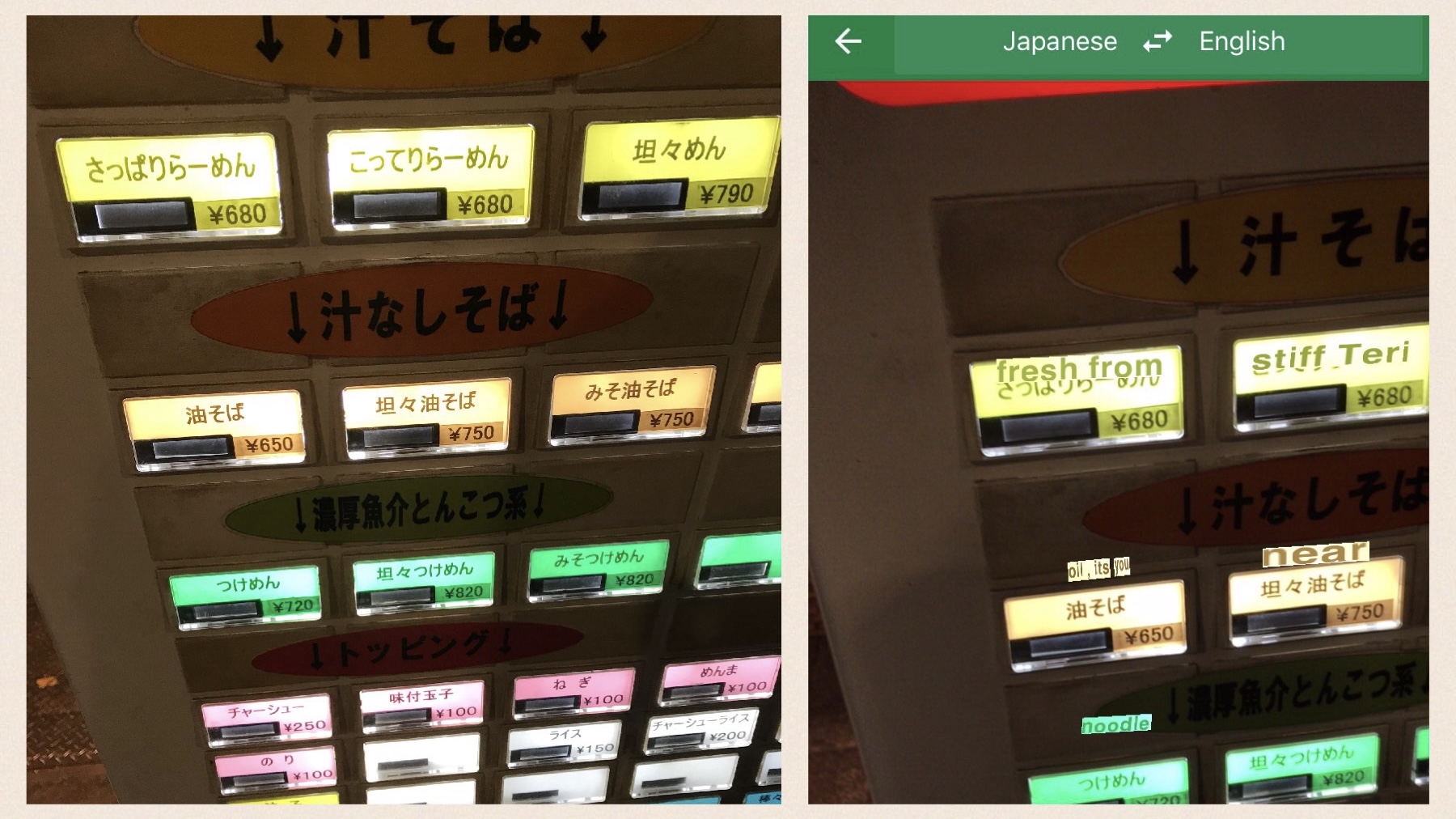 left: ordering machine; right: “fresh from”? …OK, fresh it is!
left: ordering machine; right: “fresh from”? …OK, fresh it is!
13. FUKUOKA AIRPORT DOMESTIC TERMINAL CUSTOMER SERVICE
This point might be extrapolated to all the customer service in Japan, but we encountered it first right after arrival to Fukuoka airport so they get all the credit =)
Our Helsinki-Fukuoka plane was late for 40 minutes (ETA 80:00, ATA 08:40) and most of the transferring passengers were obviously booked for 10:00 flight to Tokyo. Our plane was at 11:00, but considering the immigration, customs procedures with checked-in baggage and terminal change, I suspected even we might be on a tight schedule. However, according to my knowledge, nobody was late for either flight. Attendants were handpicking passengers with short connection from a queue. And although we were not in a hurry, once two of us got to domestic terminal, we were instantly picked up by an attendant right at the door and the entire way to the gate we were personally handed over from one customer service representative to another.
And that is more or less how it felt just anywhere. I understand there is barely any personal touch in this approach, this is just how the entire country rolls, but you just can’t help enjoying that. By the way, there is a way to see the instant difference between polite “service smile” and genuine smile: a couple of sincere comments in Japanese engaged us in a ton of lovely small talks with locals.
14. GETTING LOST BETWEEN THE SHELVES FULL OF MANGA
If you are a fellow manga fan, there are some places that you cannot miss. OK, manga can be found on every corner, but the critical mass of all the lovely manga and anime merch goodness is definitely in Animate. Animate chain has several stores over Tokyo with main store located in Ikebukuro. 6-8 floors of commercial heaven to every taste with only one drawback – do not forget to buy a Japanese-to-your-native-language dictionary =)
If it happens that your taste in manga is too old-fashioned (as is ours, obviously) and Animate shops do not have the titles that would interest you, Kyoto Manga Museum is there to make up for it. Library-like museum located in the typical building of former school will hold your attention for the entire day. Open shelves full of manga volumes that are free to read on premises is a dream come true for every bookworm. This is not to mention the rare titles that are not widely available outside and unique selection in museum store, that might surprise you with a couple of rare finds.
I was stoical through our entire stay in Japan, only buying one manga book and some merchandize, but I eventually lost it in a tiny Narita airport book store, where there was an entire “Space Brothers” on sale. Of 31 volumes I have brought home 9 and I regret not having enough luggage space for remaining 22.
15. NOT GETTING LOST IN A PUBLIC TRANSPORT SYSTEM IN TOKYO AND BEYOND
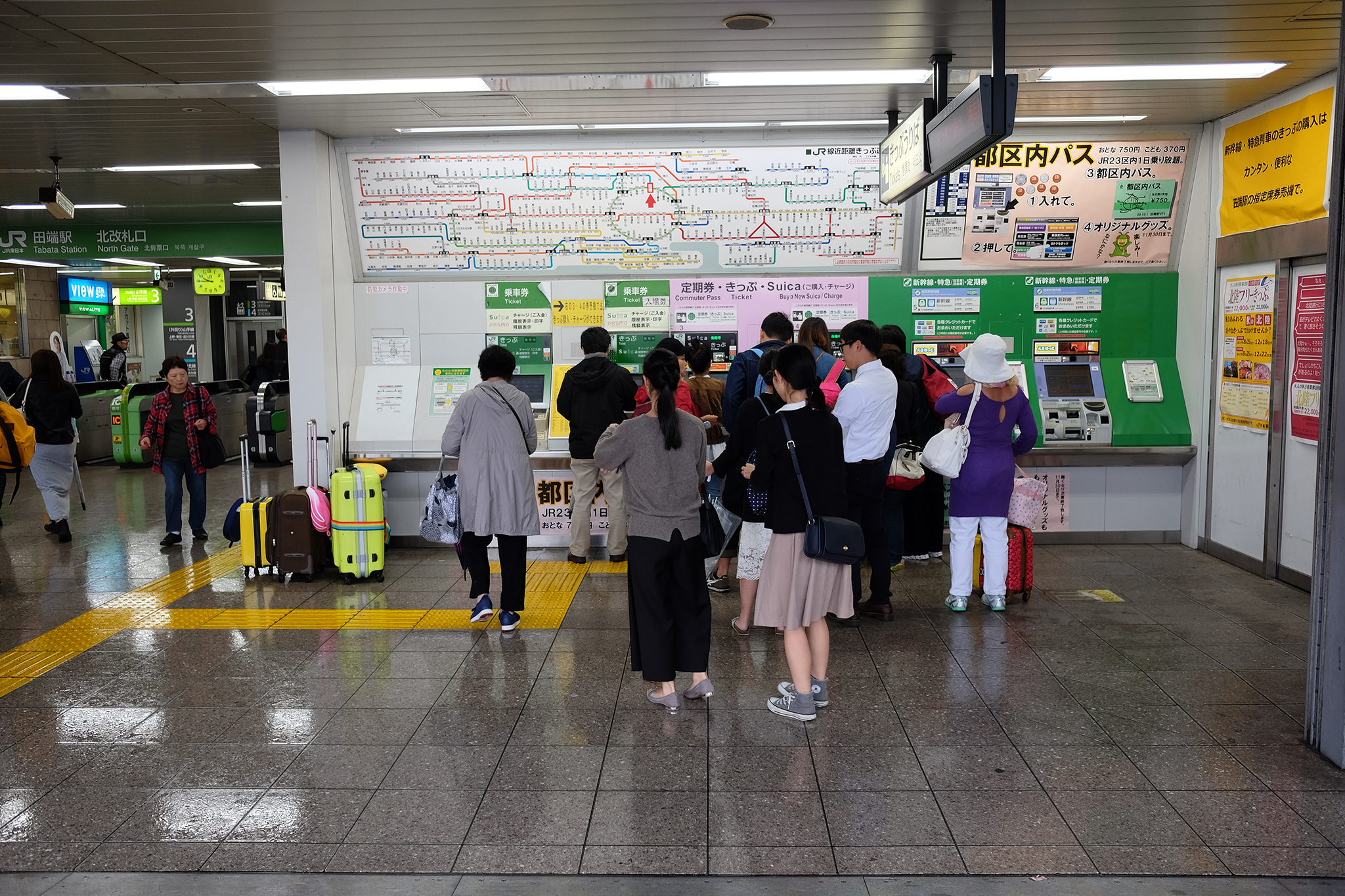 JR Tabata station ticket machines
And now it is the time to praise the far-famed Tokyo public transport system. Choose your accommodation location wisely and you can get to any point in Tokyo in no time. We have resided close to Ueno Station and transport-wise it was very nice location. We decided not to buy JR Pass as we didn’t see any financial benefit with our amount of travel and relied on an IC-card to handle all our transport payments. It worked like a charm. Despite my initial apprehension towards using all kinds of service machines, ticket machines are very easy to understand and operate.
JR Tabata station ticket machines
And now it is the time to praise the far-famed Tokyo public transport system. Choose your accommodation location wisely and you can get to any point in Tokyo in no time. We have resided close to Ueno Station and transport-wise it was very nice location. We decided not to buy JR Pass as we didn’t see any financial benefit with our amount of travel and relied on an IC-card to handle all our transport payments. It worked like a charm. Despite my initial apprehension towards using all kinds of service machines, ticket machines are very easy to understand and operate.
Same goes about all sorts of navigational signs on the stations. Platform and line changes were flawless, all the correct exits were found and nobody got lost.
Oh, here comes a little learning point for you: in Tokyo on escalator you stand on the left and pass on the right. But in Osaka it is vice versa: stand on the right and pass on the left! Also be aware of “women only” cars. Those are clearly marked, so just keep your eyes peeled for signs and marks.

16. SHINKANSEN TRAIN
Travelling on a bullet-train was my personal bucket list item number one. And for the fact that this experience was really special kudos to Ilya. As I was eager to ride the fastest possible shinkansen train Nozomi, which is not covered by JR Pass, we had to buy separate tickets, which we did first thing after landing in Haneda airport.
Side note 1: If you are more reasonable person than me, bear in mind, that all other shinkansen trains, apart from the fastest Nozomi and Mizuho are covered by JR-Pass. A time difference for Osaka-Tokyo distance between Nozomi and next fastest Hikari is only 20-30 minutes.
Side note 2: We decided to buy shinkansen tickets straight away from airport to avoid using a scary ticket machine (as it appeared, not scary at all). So no need to do that, yes.
So, back to our tickets. The initial plan was to spend maximum time in the city before every departure, so our tickets were all for 5 p.m.-something trains. As it appeared by this time outside is pitch black and you can’t see anything out of the window. So no fun in that for sure. Luckily my reasonable one forced me to change tickets to earlier departure, which (even in case of reserved seats) you can do once without any extra costs. And the view from the below pic is a the reward for our prudence.
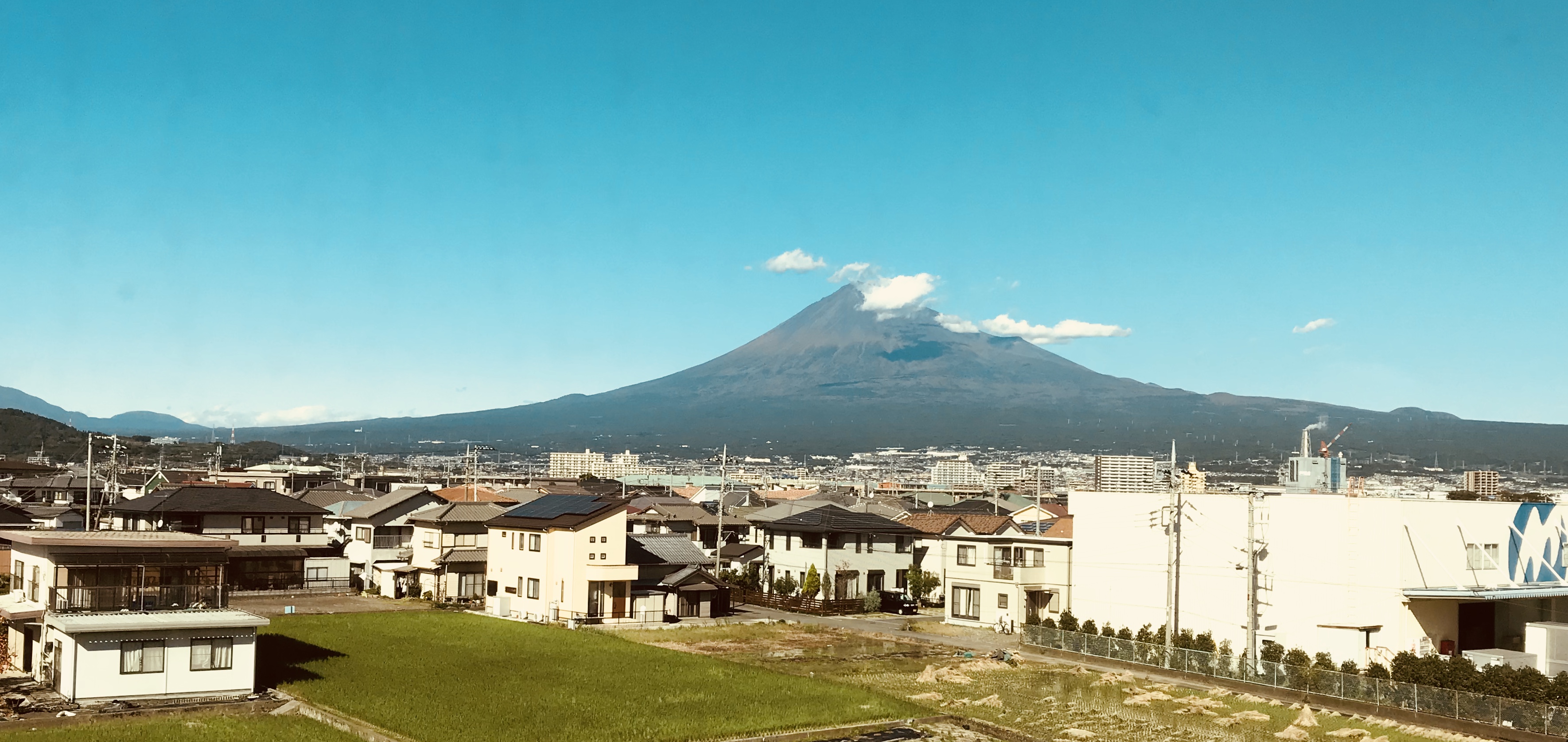 Mt. Fuji
Mt. Fuji
If you come from Tokyo by Shinkansen on a clear day start looking for mount Fuji on you right side about 50 minutes after departure from Tokyo Station. It stays in sight for around 10 minutes.
17. AKIHABARA
I couldn’t help but perceive Tokyo as a collection of different smaller cities and towns connected by public transport system. Wherever you go, exiting the train or metro station, every time you find yourself in a totally different environment. I think I should write separate post on districts of Tokyo, because there is so much to tell about all of them. By far Akihabara have become my favourite one. Akihabara Electric Town was within the walking distance from the area we resided in (Ueno Station) and we have strolled there several times, noticing gradually changing surroundings. But if you want an “instant hit on the head” kind of first impression, take a train or subway to Akihabara Station and there take Electric Town exit towards Radio Kaikan. As far as I am concerned, the time after dark is the best =). If you are a fellow otaku, then you might already know all I am trying to say here. However, even if you are not – especially if you are not – just stroll the central street and feel the ultimate vibe of modern-geeky. I will give the more in-depth overview about several specific spots in one of my further posts.
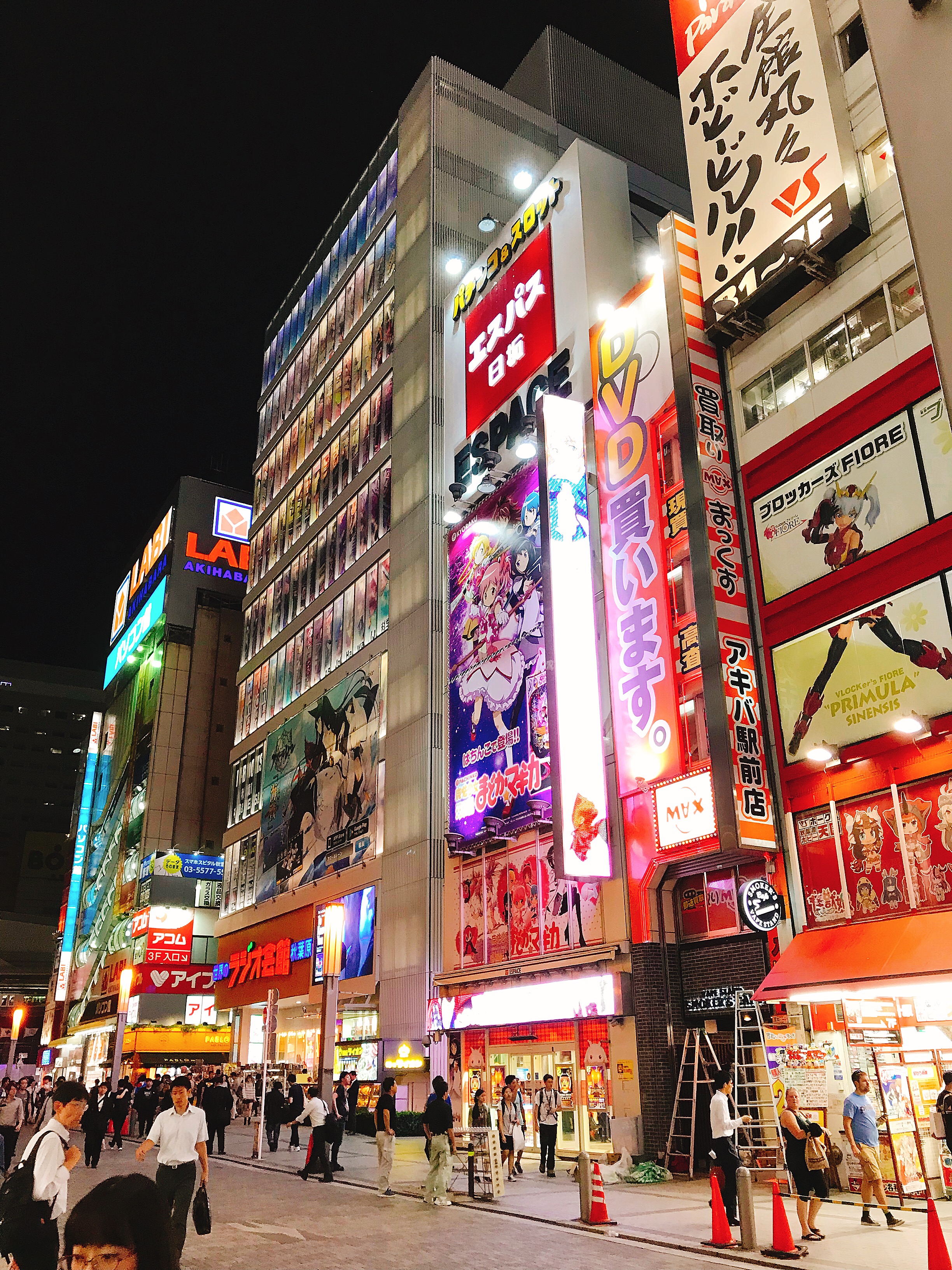
By the way, if your local guide starts to describe otaku culture representatives in negative characteristics, basically it all comes to “no-lifer with a questionable hygiene”, just do not take it seriously, because we definitely come in all colors and shapes. ¯\_(ツ)_/¯
18. KANDA MYOJIN SHRINE
Still in Akihabara area, I couldn’t resist the urge to visit one very special shrine. The kind of “special” that is not inherent in western religions just yet. As you might guess from the district it is located in, Kanda Myojin is an IT-oriented Shinto shrine. If you are not into the idea of praying for your hardware and software, it is still worth an extra walk, as it is just plain beautiful. But if you come for the purpose, it is the only place where you can buy Information Savior and Protector amulets (omamori).
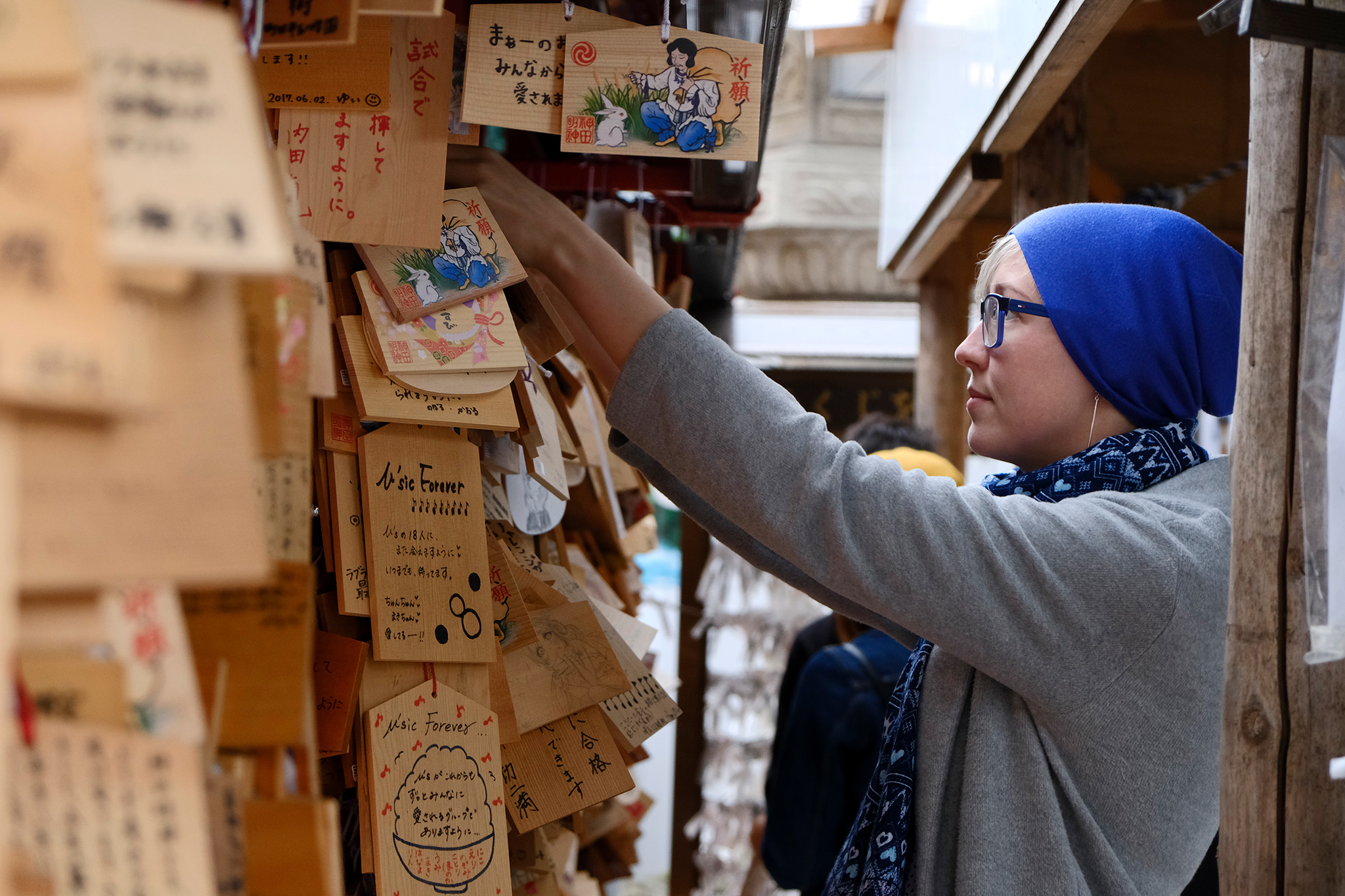
While we were there, we have encountered a group of “salaryman” who came to make they prayers in a very orderly fashion. I wonder if this was something of a regular visit to make sure their IT business runs smoothly? =)
19. CLEANLINESS OF PUBLIC SPACE
This shouldn’t have been a big surprise, actually, but it was. You will notice a lack of trash bins on the streets right away. It seems a little inconvenient at first, but you’ll get used to it. Despite this fact, at least comparing to the countries we have been to, the streets and trains are very clean, I would even say extremely clean. Moreover, this applies to all cities and towns we have been to. The infrastructure components are different, age of the rolling stock varies from new to “retro”, but one thing is certain: everything is neat, tidy and carefully taken care of. By the way, older train cars in Kyoto, Keihan Railway or Randen Electric trams, are quite a sight on their own.
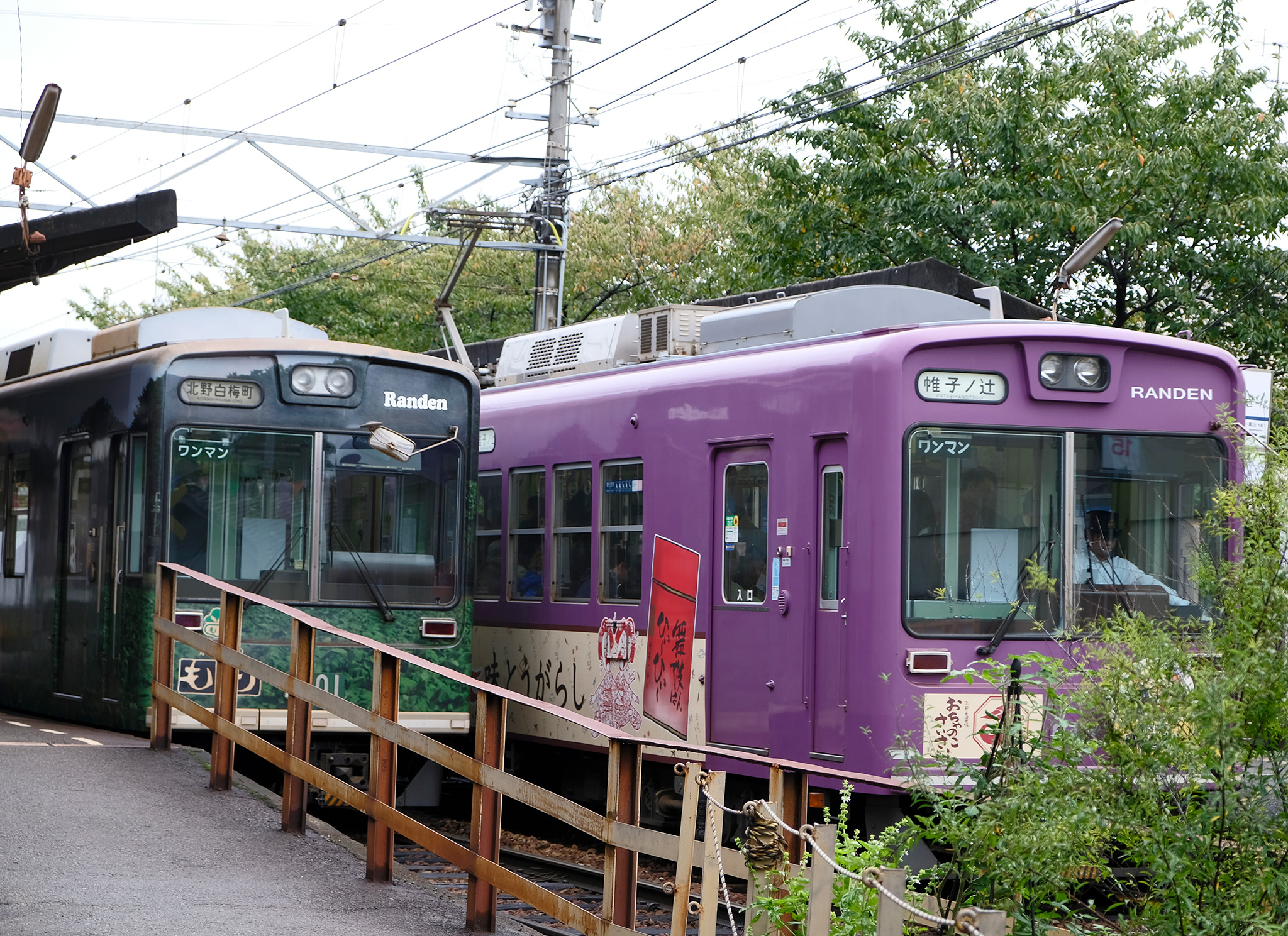
20. AIRBNB EXPERIENCES
During this travel we tried Airbnb as our entertainment provider for the first time. We opted in to three classes and experiences in Tokyo and were extremely satisfied. As Airbnb was also our accomodation provider, it was really convenient to hold all the notifications and correspondence in one app. I will skip the part about easy joining/payment etc. What I really liked is the attitude of all our hosts: detailed route to the meeting point with pictures, swift replies to the questions, quality of the experience itself and personalized feedback afterwards. Possibly we just have selected the right events, but all of our hosts did an admirable job bringing local culture closer to us. Apart from the event itself the locations of the classes really helped us to visit non-touristy places in Tokyo. For example, Samurai Swordship class was held in a local gymnasium in Shinagawa, and visiting the place along with locals added up to the authenticity of it.
In addition to all of the above, we have met fellow tourists, who were on the same level of crazy about Japanese culture as we are. Sharing impressions in the middle of the journey gives you time to adjust and adapt based on the valuable first-hand intel you get from these conversations.
To whoever might be interested, here is our choice of experiences, all highly recommended by both Alisa and Ilya:
Ramen and gyoza cooking class – featured in one of my previous posts.
Japanese Slow Living experience – hosted by very special people who will gladly share all their knowledge with you.
Samurai Swordplay class – oh man! You get so much more from this than just a sword practice!
21. LOCAL GUIDES
Trying to get the most of our time in Japan, we decided to resort to the help of local guides. We never used that kind of service before, but Japan seemed so vast in sights and so different in culture, that we just didn’t want to miss anything. No matter what kind of service we used (professional or volunteer) in every city: Tokyo, Kyoto and Osaka we were welcomed by knowledgeable people who introduced us to the Japan we really wanted to get to know. All pre-arrangements were made via e-mail and by the attitude that was shown in these first letters we knew, we are all set up to spend exciting days with our guides. Although we heavily relied on the experience of the guides when coordinating our plans, all itineraries were carefully composed with our areas of interest in mind. In all cases it turned out to be 50/50: 50% of destinations we knew we would want to see and 50% suggested by the guide.
In my opinion the best value of local guide is the fact that he or she can take you to the most authentic back alleys, where you would never tumbled to go yourself. Also you get the human to human insight about the specific locations based on their personal experience that you cannot find in guidebooks.
22. DISPOSABLE HEAT PACKS A.K.A. KAIRO
I honestly have no clue why there is no such thing back in my homeland, but these small disposable heat packs that you can get at every corner shop in Japan are real life saviors. You just stick a pack to your undershirt or slip it into an inner pocket of your coat and you are set for an entire cold day outdoors. The average temperature of a pack is around 40℃ and it holds its warmth for about 8-12 hours, depending on a size.

The main two options are sticky and non-sticky. Left and top on the pics are non sticky large size ones and bottom left is a small size sticky one. I had a feeling, that non-sticky one is more hot because of greater amount of content in a pack. The heat generation is due to exothermic chemical reaction between pack components catalyzed by oxygen. With an average price of 480 JPY (around 3,6 EUR) for a package of ten individual packs you might want to stock up on them. For me heat packs came extremely handy during the trip itself: as I didn’t bring any coat. in +10℃ it was a good opportunity to stick to the walking plan without feeling cold. If you decide on bringing those back home with you, bear in mind that those bastards are quite heavy, when in bulk.
It is quite hard to draw the line here, but one has to stop somewhere :)
In part 3 I will delve into the traditional aspects of life we were particularly fond of. And if you want to recap, part 1 is all about the delicious food.